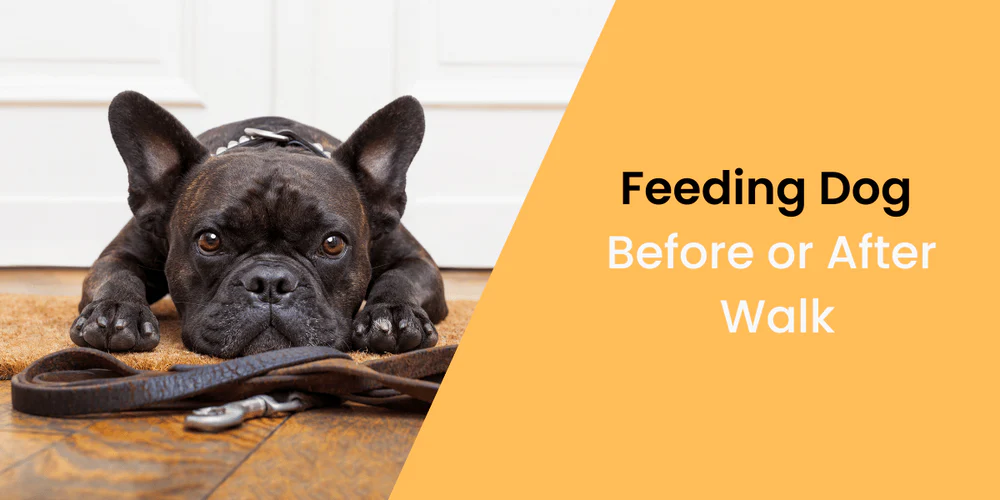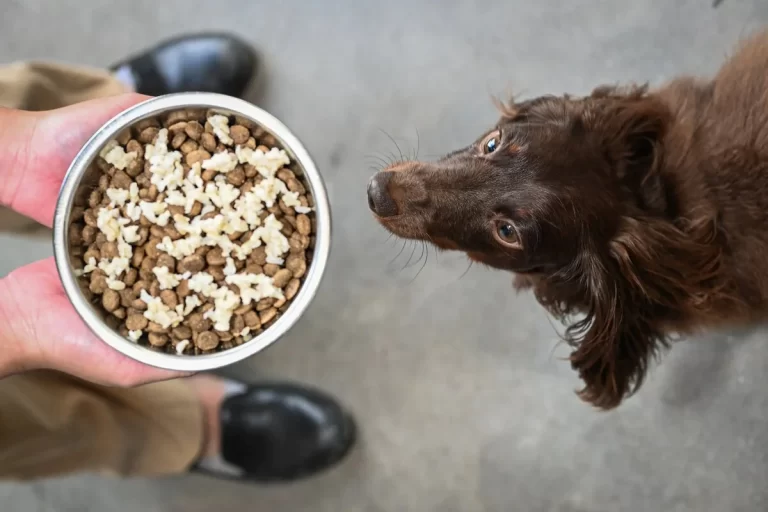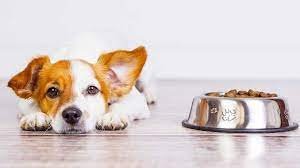Do I Feed My Dog First Thing In The Morning Or Take Him For A Walk?
Should I feed my dog or take him out first?
Whether you should feed your dog or take him out first depends on your dog’s routine, individual needs, and your schedule. Here are some considerations to help you decide:
1. Morning Routine:
- If Your Dog Needs to Go Out: If your dog typically needs to go to the bathroom first thing in the morning, taking him out for a bathroom break should be a priority.
- If Your Dog Can Wait: If your dog is comfortable waiting a bit after waking up, you can feed him first and then take him out.
2. Mealtime Routine:
- Feeding Before Walks: Some dog owners prefer to feed their dogs before walks or exercise to avoid the potential for upset stomachs during physical activity.
- Feeding After Walks: Others prefer to take their dogs for a walk before feeding, allowing them to burn off energy before mealtime.
3. Individual Preferences:
- Observe Your Dog’s Behavior: Some dogs may be more comfortable going to the bathroom after eating, while others may prefer to go first. Observe your dog’s behavior to understand his preferences.
4. Puppy Considerations:
- Puppies: If you have a puppy, they may have more urgent bathroom needs in the morning. Taking them out promptly may help with house training.
5. Consistency:
- Establish a Routine: Dogs often appreciate routine, so try to establish a consistent routine for feeding, bathroom breaks, and walks.
6. Health Considerations:
- Health Issues: If your dog has certain health issues or dietary requirements, your veterinarian may provide specific guidance on when to feed and take your dog out.
In summary, there is no one-size-fits-all answer, and it depends on your dog’s individual habits and needs. Some dogs may prefer to go out first thing in the morning, while others may be more interested in breakfast. Consistency in routine is key, and observing your dog’s behavior can help you determine the best order for feeding and bathroom breaks. If you have specific questions or concerns about your dog’s routine, it’s always a good idea to consult with your veterinarian for personalized advice.
Why does my dog eat right before a walk?
Dogs may eat right before a walk for a variety of reasons, and their behavior can be influenced by both instinctual and learned behaviors. Here are some possible reasons why your dog eats before a walk:
- Energy Boost:
- Dogs may eat before a walk to fuel up and gain energy for the upcoming physical activity. Eating provides them with the necessary nutrients and calories to sustain their energy levels during the walk.
- Routine and Association:
- Dogs thrive on routine, and they often associate specific activities with one another. If your dog has learned that eating precedes a walk, they may eagerly consume food in anticipation of the enjoyable walk that follows.
- Comfort and Security:
- Some dogs find comfort in routine activities, and eating may serve as a reassuring and calming behavior for them. Knowing that a walk typically follows a meal can contribute to a sense of security and routine.
- Natural Behavior:
- In the wild, predators often hunt and eat before engaging in other activities. While domestic dogs have different lifestyles, the instinct to eat before expending energy may still be present in their behavior.
- Hunger and Appetite:
- Dogs may simply be hungry, and the sight or smell of food may trigger their appetite. If it’s mealtime and a walk is approaching, they may be eager to eat.
- Positive Association:
- If your dog enjoys walks, they may associate the positive experience of a walk with the act of eating. This positive reinforcement can strengthen the behavior of eating before a walk.
- Exercise-Induced Hunger:
- Physical activity can stimulate appetite, and some dogs may naturally feel hungry before a walk due to the increased energy expenditure they anticipate during the activity.
- Social Interaction:
- For dogs, meals can also be a social time. If the walk involves interaction with you or other family members, the prospect of socializing and spending time together can be an additional motivator for your dog to eat before the walk.
While eating before a walk is generally not a cause for concern, it’s essential to ensure that your dog’s overall eating habits and behavior are healthy. If you observe any significant changes in your dog’s appetite, behavior, or health, it’s a good idea to consult with your veterinarian to rule out any underlying issues or concerns. Additionally, maintaining a consistent routine and positive associations with walks can contribute to your dog’s overall well-being.
What is a good morning routine for a dog?
Creating a good morning routine for your dog helps provide structure, predictability, and positive interactions. A well-established routine can contribute to your dog’s overall well-being. Here’s a suggested morning routine for dogs:
- Wake Up Early:
- Wake up at a consistent time each morning. Dogs often appreciate routine, and waking up at the same time helps set the tone for the day.
- Morning Greetings:
- Greet your dog with enthusiasm and positive energy. Spend a few minutes interacting with your dog, offering gentle petting, and providing verbal praise.
- Bathroom Break:
- Take your dog outside for a bathroom break. This is especially important for puppies or dogs with specific bathroom needs. Be patient and give them time to do their business.
- Mealtime:
- If you feed your dog breakfast, provide their meal after the bathroom break. Establishing a consistent feeding schedule can help regulate your dog’s digestive system.
- Morning Walk or Exercise:
- Take your dog for a morning walk or engage in some form of exercise. This can include a walk around the neighborhood, playtime in the backyard, or a short training session. Exercise helps release energy and sets a positive tone for the day.
- Interactive Play or Enrichment Activities:
- Spend some time engaging in interactive play or providing enrichment activities. This could include playing with toys, puzzle feeders, or other mentally stimulating activities.
- Training Time:
- Incorporate a short training session into your morning routine. This helps keep your dog mentally engaged and reinforces positive behavior.
- Quiet Time:
- After exercise and play, allow your dog some quiet time to relax. Provide a comfortable and cozy resting area where they can take a nap or enjoy some downtime.
- Grooming and Health Check:
- Depending on your dog’s grooming needs, perform a quick brush or grooming session. Use this time to check for any signs of health issues, such as lumps, bumps, or abnormalities.
- Provide Fresh Water:
- Ensure that your dog has access to fresh water throughout the morning. Hydration is important for their overall health.
- Quality Time with You:
- Spend quality time with your dog before you leave for the day. This could include additional petting, cuddling, or simply being present with them.
- Departure Routine:
- If you need to leave for work or other commitments, establish a departure routine that includes saying goodbye calmly. Provide your dog with a safe and comfortable space, and consider leaving them with a favorite toy or puzzle feeder for mental stimulation.
Remember that each dog is unique, and their morning routine may need to be adjusted based on their individual needs, age, and health. Consistency is key, and observing your dog’s behavior can help you tailor the routine to suit their preferences and well-being.
Should I feed my dog before or after potty?
The timing of feeding and bathroom breaks for your dog can depend on various factors, including your dog’s age, routine, and individual needs. Here are some considerations to help you decide whether to feed your dog before or after a potty break:
Feeding Before Potty:
- Establish a Routine:
- Many dogs benefit from a consistent routine. If your dog is accustomed to eating at specific times, you may choose to feed them before a scheduled potty break.
- Digestive Regularity:
- Some dogs may naturally have a bowel movement shortly after eating. Feeding before a potty break may help establish a regular routine for bathroom breaks.
- Puppy House Training:
- For puppies, feeding before a bathroom break can be a useful strategy when house training. Puppies often need to eliminate shortly after eating.
- Scheduled Meals:
- If your dog is on a scheduled feeding regimen with specific meal times, feeding before a potty break aligns with their regular routine.
Potty Break Before Feeding:
- Prevent Accidents:
- Taking your dog for a potty break before feeding can help prevent accidents in the house. Some dogs prefer to relieve themselves before eating.
- Exercise and Digestion:
- A short walk or bathroom break before a meal can provide your dog with some exercise and may aid in digestion.
- Avoid Restlessness:
- Some dogs may become restless or anxious when they need to go to the bathroom. Allowing them to relieve themselves before eating can help them relax during mealtime.
- Scheduled Walks:
- If you have a regular morning walk routine, taking your dog for a potty break before feeding aligns with the structure of your daily activities.
General Tips:
- Observe Your Dog:
- Pay attention to your dog’s natural preferences and habits. If they tend to have specific bathroom habits, consider accommodating those habits in their routine.
- Consistency is Key:
- Whether you choose to feed before or after a potty break, consistency in routine is important for your dog’s well-being. Dogs often thrive on predictable schedules.
- Puppy Considerations:
- Puppies may have more urgent bathroom needs, so their routine may involve more frequent potty breaks, including shortly after meals.
- Consult with a Veterinarian:
- If you have specific concerns or if your dog has unique health considerations, consult with your veterinarian for personalized advice.
Ultimately, the best approach depends on your dog’s individual habits and your daily routine. Whether you choose to feed before or after a potty break, establishing a consistent schedule and observing your dog’s behavior can help create a routine that works well for both of you.
What should I give my dog first thing in the morning?
The first thing you give your dog in the morning can depend on your dog’s routine, dietary needs, and your schedule. Here are some common options for what you can provide your dog in the morning:
- Fresh Water:
- Always start the morning by ensuring your dog has access to fresh water. Hydration is essential for their overall health.
- Bathroom Break:
- Take your dog outside for a bathroom break. This is especially important for dogs that may have been crated or confined overnight.
- Morning Meal:
- If you feed your dog multiple meals a day, you can provide their morning meal after the bathroom break. Ensure that the food is appropriate for your dog’s age, size, and dietary needs.
- Interactive Toys or Puzzle Feeders:
- To engage your dog’s mind and provide mental stimulation, consider offering interactive toys or puzzle feeders with treats or kibble. This can be a way to keep your dog occupied and entertained.
- Morning Walk or Exercise:
- If your schedule allows, take your dog for a morning walk or engage in some form of exercise. Physical activity is important for their well-being.
- Affection and Interaction:
- Spend a few minutes giving your dog affection and positive interaction. Dogs thrive on social bonds, and positive attention contributes to their overall happiness.
- Training Session:
- Incorporate a short training session into your morning routine. This can help reinforce good behavior and provide mental stimulation for your dog.
- Grooming or Health Check:
- Depending on your dog’s grooming needs, perform a quick brush or check for any signs of health issues. Regular grooming and health checks contribute to your dog’s overall well-being.
- Quiet Time or Rest:
- Allow your dog some quiet time or an opportunity to rest after the morning activities. Provide a comfortable and cozy space where they can relax.
- Playtime or Interactive Games:
- If your dog enjoys playtime, spend a few minutes engaging in interactive games or playing with their favorite toys.
Remember that each dog is unique, and their morning routine may need to be adjusted based on their individual preferences and needs. Consistency in routine, positive interactions, and attention to your dog’s overall well-being are key components of a healthy morning routine. If you have specific concerns or questions about your dog’s morning routine, consulting with your veterinarian can provide personalized guidance.
What time should I walk my dog in the morning?
The best time to walk your dog in the morning can depend on various factors, including your schedule, your dog’s routine and preferences, and the local climate. Here are some considerations to help you determine the optimal time for your dog’s morning walk:
- Consistent Schedule:
- Dogs thrive on routine, so try to establish a consistent schedule for morning walks. Whether it’s early morning or later in the morning, maintaining a regular routine can help your dog anticipate and look forward to their walks.
- Cooler Temperatures:
- In hot climates, it’s advisable to schedule walks during the cooler part of the morning to avoid high temperatures later in the day. This is especially important for breeds sensitive to heat.
- Before Work Commitments:
- If you have work or other commitments in the morning, plan the walk before you leave. This ensures that your dog gets the exercise and attention they need before you are away.
- Puppy Bathroom Needs:
- Puppies often have more frequent bathroom needs, so consider taking them out shortly after waking up to help with house training.
- Local Safety:
- Consider the safety of your neighborhood during different times of the day. If you walk in the early morning or late evening, ensure that the area is well-lit and safe.
- Your Dog’s Energy Level:
- Some dogs are more active in the morning, while others may be a bit more relaxed. Consider your dog’s energy level and preferences when planning the morning walk.
- Quiet Time:
- If your dog enjoys a quieter environment, walking earlier in the morning may be preferable, especially if you live in a busy area.
- Morning Routine:
- If you have established a morning routine that includes other activities like feeding or playtime, you can incorporate the walk at a time that fits naturally into the routine.
Ultimately, the best time for your dog’s morning walk is the time that works best for both of you and ensures that your dog receives the exercise and mental stimulation they need. Pay attention to your dog’s behavior and preferences to find a time that aligns with their natural rhythm. If you have specific concerns or considerations, such as extreme temperatures or health issues, consult with your veterinarian for personalized advice.
Can you walk a dog on an empty stomach?
Yes, it is generally okay to walk a dog on an empty stomach. In fact, many dogs are comfortable going for walks before or after their meals. The decision to walk a dog on an empty stomach depends on various factors, including the dog’s individual preferences, routine, and health.
Here are some considerations:
- Comfort Level:
- Some dogs may be more comfortable walking on an empty stomach, while others may prefer a short bathroom break before or after meals. Pay attention to your dog’s behavior to determine their comfort level.
- Exercise Before or After Meals:
- If you feed your dog multiple meals a day, you can choose to walk them either before or after meals. Some dogs may be more active and energetic after eating, while others may prefer a walk before their meal.
- Bathroom Breaks:
- If your dog typically needs a bathroom break shortly after eating, plan the walk accordingly. This can be especially important for puppies or dogs with specific bathroom needs.
- Exercise and Digestion:
- Light exercise, such as a walk, can aid in digestion. Walking your dog before or after meals may contribute to their overall well-being.
- Individual Preferences:
- Every dog is unique, and their preferences may vary. Some dogs may be eager to go for a walk on an empty stomach, while others may enjoy a walk after a meal.
- Health Considerations:
- If your dog has specific health conditions or dietary requirements, consult with your veterinarian for guidance on the best timing for walks in relation to meals.
- Consistent Routine:
- Dogs often thrive on routine. Establish a consistent routine for feeding, walks, and other activities to help your dog feel secure and comfortable.
It’s important to note that while walking a dog on an empty stomach is generally acceptable, individual dogs may have different needs and preferences. Additionally, some dogs may be prone to exercise-induced vomiting, so be mindful of your dog’s behavior during and after the walk.
If you have specific concerns or if your dog has unique health considerations, consult with your veterinarian for personalized advice on the best timing for walks in relation to meals.






